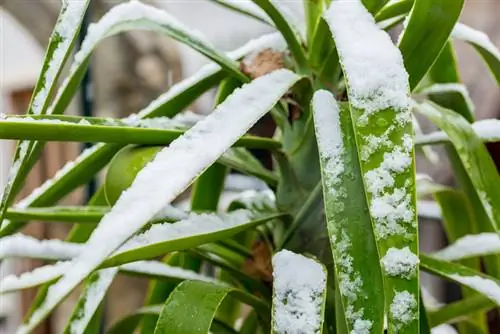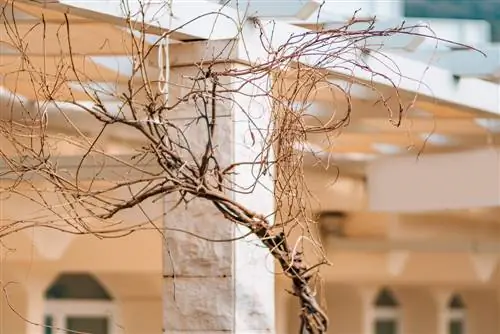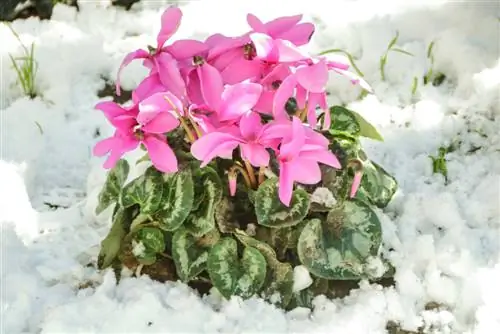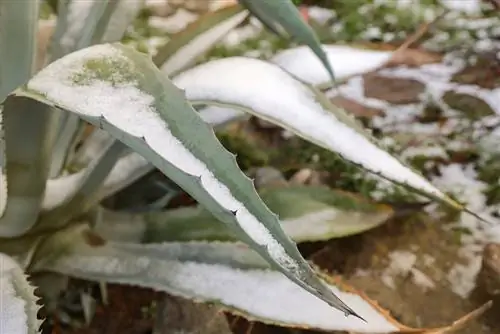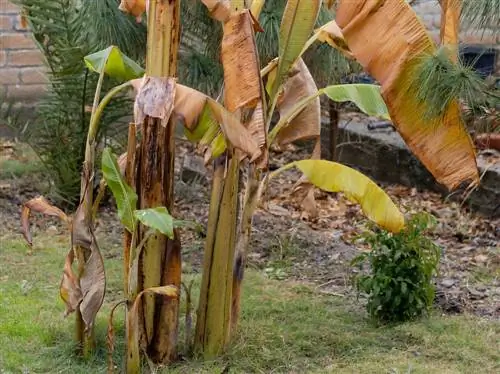- Author admin [email protected].
- Public 2023-12-16 16:46.
- Last modified 2025-06-01 06:02.
It is one of the most popular houseplants because it is the easiest to care for: the yucca palm. The often very strong growing plant with the trunk that grows straight up and the palm-like tuft of leaves usually thrives on its own - as long as you don't water it too much and hold back on the fertilizer. The only problem is frost, because the indoor yucca is not hardy.
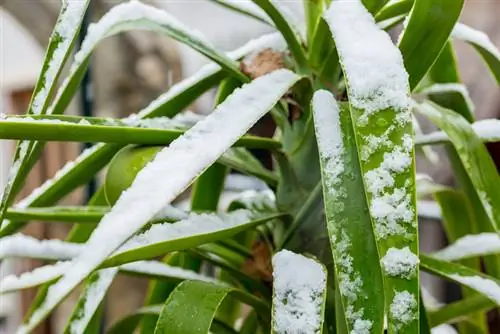
What to do if your yucca palm is frozen?
If a yucca palm suffers frost damage, you should keep it away from further cold, water it sparingly and place it in a bright location. Cut off frozen parts in spring, fertilize carefully, cut back radically if necessary and transplant into fresh substrate to stimulate new growth.
Hardy vs. non-hardy Yucca
The type of houseplant cultivated as a houseplant is Yucca elephantipes, which is absolutely not frost hardy and therefore has no place outside in the cold season. This indoor yucca must under no circumstances be exposed to temperatures below freezing - frostbite is inevitable, depending on the age of the plant. Older specimens are generally much less sensitive. Bring the plant back into the house at the beginning of autumn and be particularly careful with ventilation during the winter months: It is better to put the yucca away before opening a window and letting in cold air. In contrast to Yucca elephantipes, there are winter-hardy species such as Yucca gloriosa or Yucca filamentosa that have no problem with frost at all.
How to recognize frost damage
If your yucca has suffered frost damage, this is probably reflected in these characteristics:
- Your yucca suddenly drops its leaves (e.g. after airing).
- After this first sign, the plant can recover or else
- Leaves, shoots and / or trunk become soft in the following days to weeks.
- White spots may also appear on the leaves and shoots.
- This is frostbite.
- Lastly, the leaves initially turn yellow and then eventually die.
Saving Frozen Yucca - Here’s What You Can Do
If you think your yucca has frozen, don't do anything - except, of course, keep it away from further cold. Just observe the plant: Do the leaves and shoots recover on their own or do they actually die? During this time, water the yucca only slightly, do not fertilize it and place it in a bright place. You usually only realize in spring whether and how much of the plant can actually be saved. At the beginning of the growing season it is best to proceed as follows:
- Inspect the plant thoroughly.
- Cut away all frozen and diseased parts.
- Water little, rather spray the yucca.
- Fertilize carefully to stimulate new growth.
- If you have severe frostbite, don't be afraid of a radical pruning.
- With this one you can remove all the leaves and leave only part of the trunk and the roots.
- It is best to repot the trimmed yucca in fresh substrate.
- With a bit of luck, the plant will sprout again.
Tip
In general, it makes sense to shorten yuccas that are too large from time to time. This will rejuvenate the plants and ensure lots of fresh shoots.

